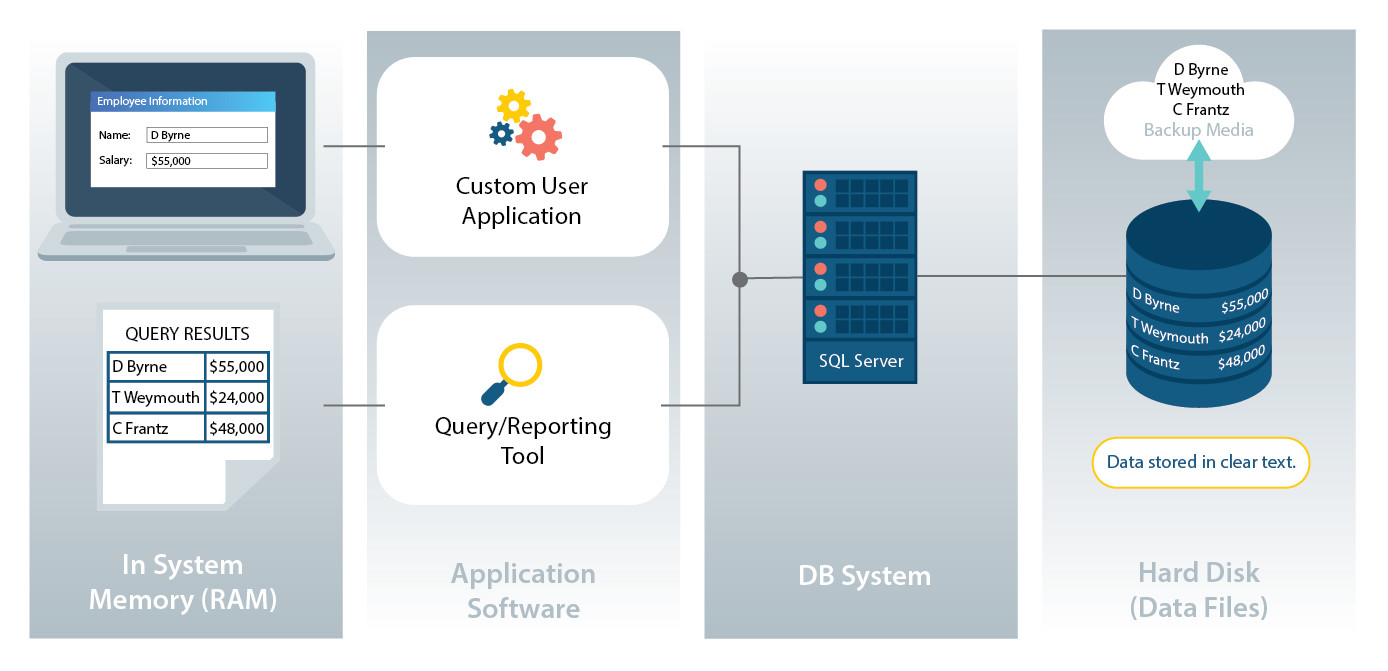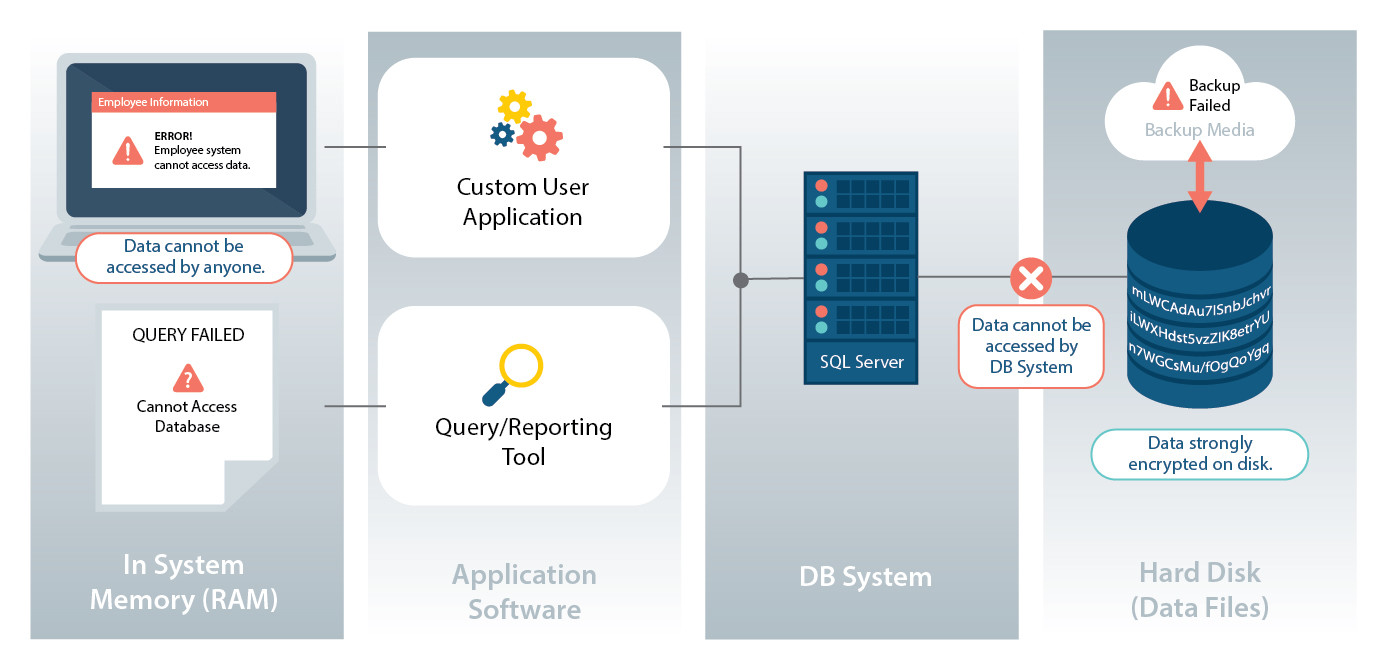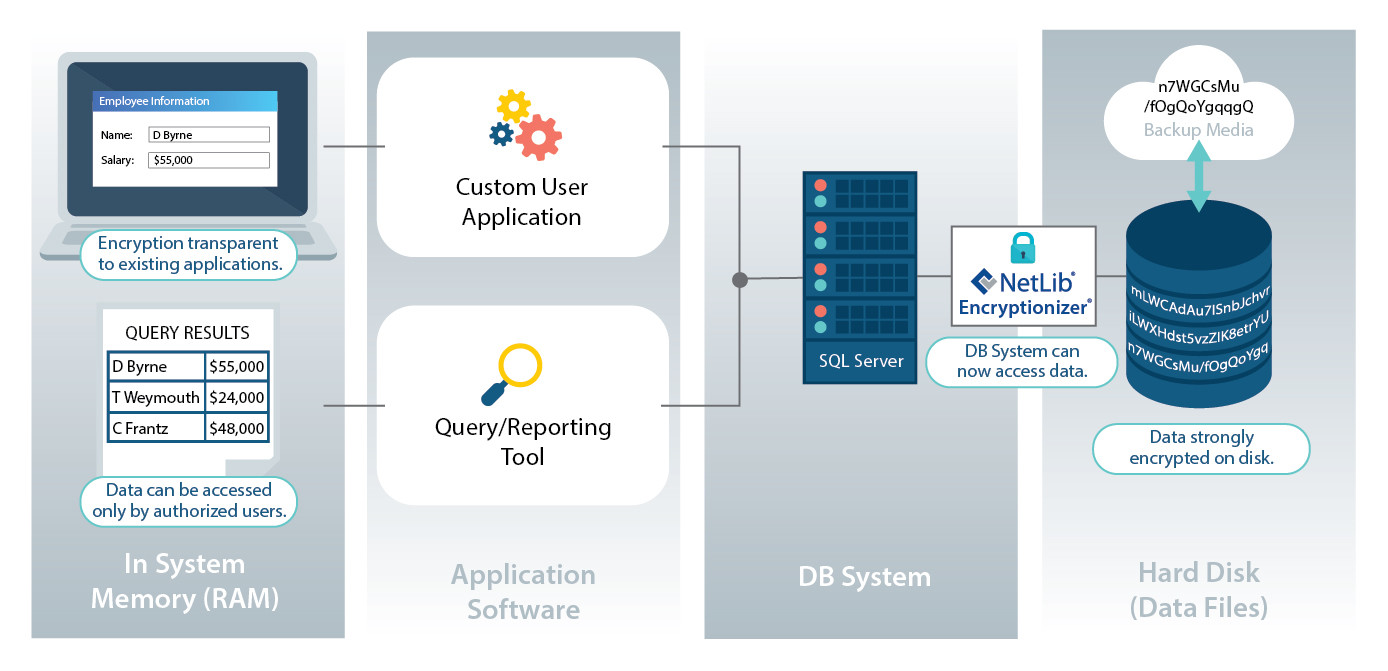Automatic Whole Database Encryption Software
Whole Database Encryption: Why is it important?
The purpose of whole database encryption is to make a database unusable if it is stolen, copied, downloaded, lost, or otherwise improperly accessed. It is fast, unobtrusive, requires no programming, no administration, and can usually be deployed in a couple of hours or less.
Whole database encryption uses completely on-the-fly, dynamic encryption and decryption. Data is never decrypted on disk, only in memory as requested by SQL Server. In addition, data is automatically encrypted before being written back to disk. Below are three diagrams that show a simplified, brief outline of how Encryptionizer works.
Encryptionizer: The Premier Data Security Solution
NetLib Security’s high performance data security platform, Encryptionizer, delivers the highest level of protection for your most important asset: your data. It can transparently encrypt your data while maintaining business stability with virtually no impact on performance and no additional programming required. It is also fast, unobtrusive, and can be deployed within a few hours or less.
How Encryptionizer Works
Diagram A – Database Access Layers – without NetLib® Encryptionizer®

Databases are stored in clear text (also called plaintext) on disk and backup media. Any person with access to database, authorized or not, can see information.
While there may be security measures in place within the SQL Server system to prevent unauthorized access to the SQL Server program itself, the database files are still vulnerable. The physical files can be viewed and data seen in clear text through any simple data viewer. There are common data harvesting programs available that can collect data from database files outside of SQL Server. A stolen backup tape or files copied from the server are all a thief needs to get access to sensitive data.
Diagram B – Database Access Layers – Files Encrypted with NetLib® Encryptionizer®, but not Secured

Using an Encryptionizer utility, databases have been strongly encrypted (also called ciphertext). They are now unreadable by everyone.
The files are now encrypted on the disk (data-at-rest), but SQL Server is not yet able to access these data files. If someone were to view these files or try to harvest data from the physical database files, they would find that the data is unusable. It is encrypted and unintelligible. The next step must be taken to allow authorized access to the data.
Database Access Layers – Files Encrypted and SQL Server Secured with NetLib® Encryptionizer®

SQL Server has been “Secured” by Encryptionizer to access the encrypted files. These files can be accessed only by this copy of SQL Server. If the data files were copied to another machine, the files could not be read
Using our patented technology, once Encryptionizer has enabled SQL Server with the correct key, the database system can process encrypted (ciphertext) databases as well as normal, unencrypted databases (cleartext or plaintext). Encryptionizer’s dynamic encryption works on-the-fly to dynamically encrypt or decrypt data only in server memory. Databases on disk and archives remain encrypted at all times!
All encryption/decryption occurs at the operating system level, which makes it completely transparent to SQL Server and associated applications.
